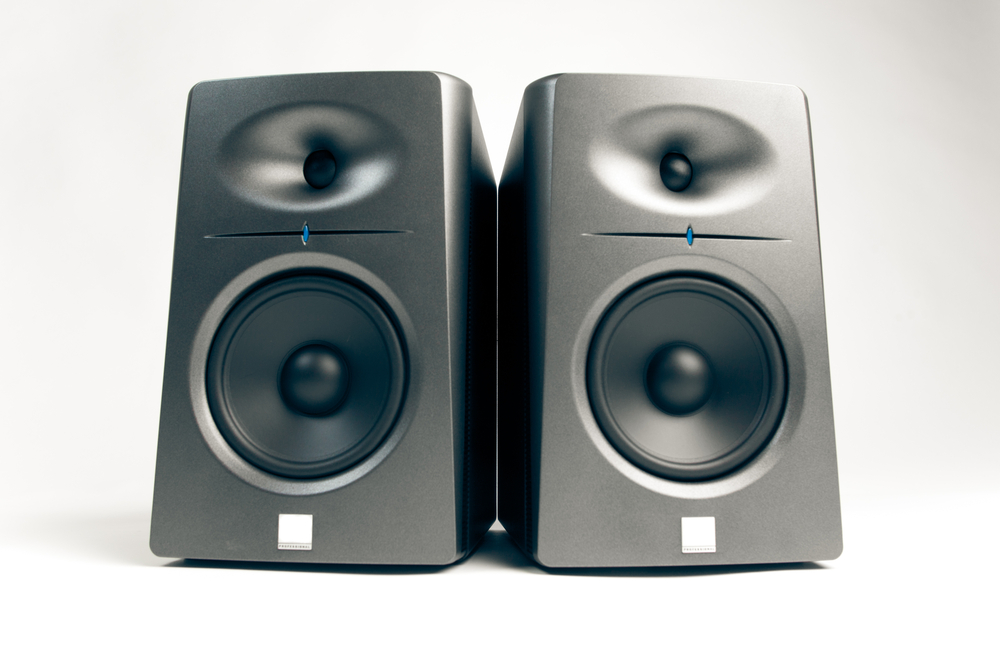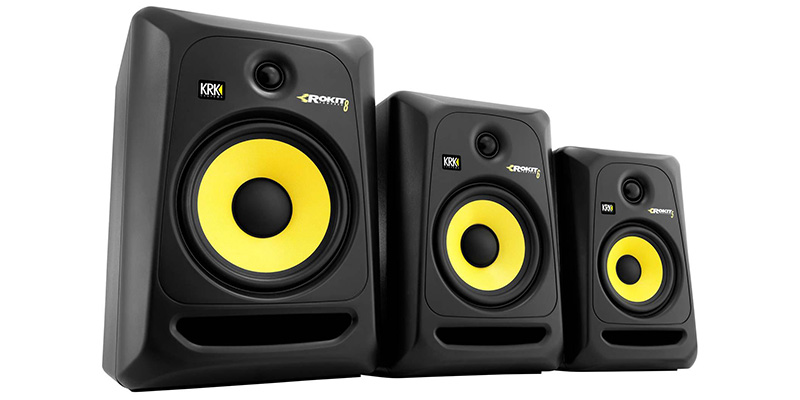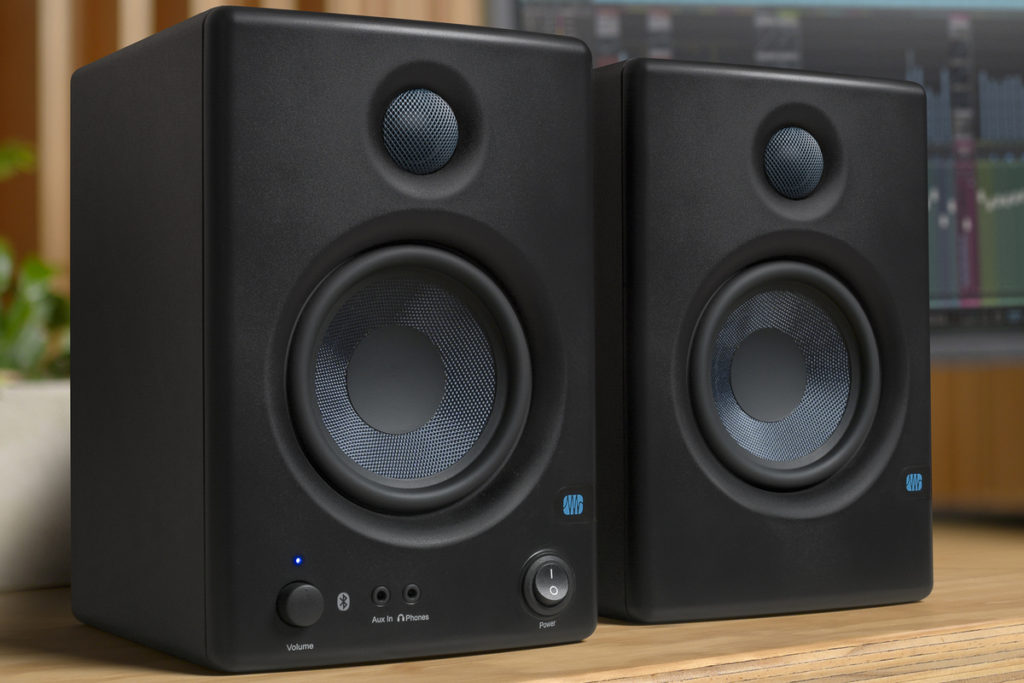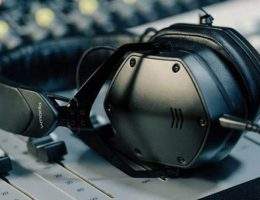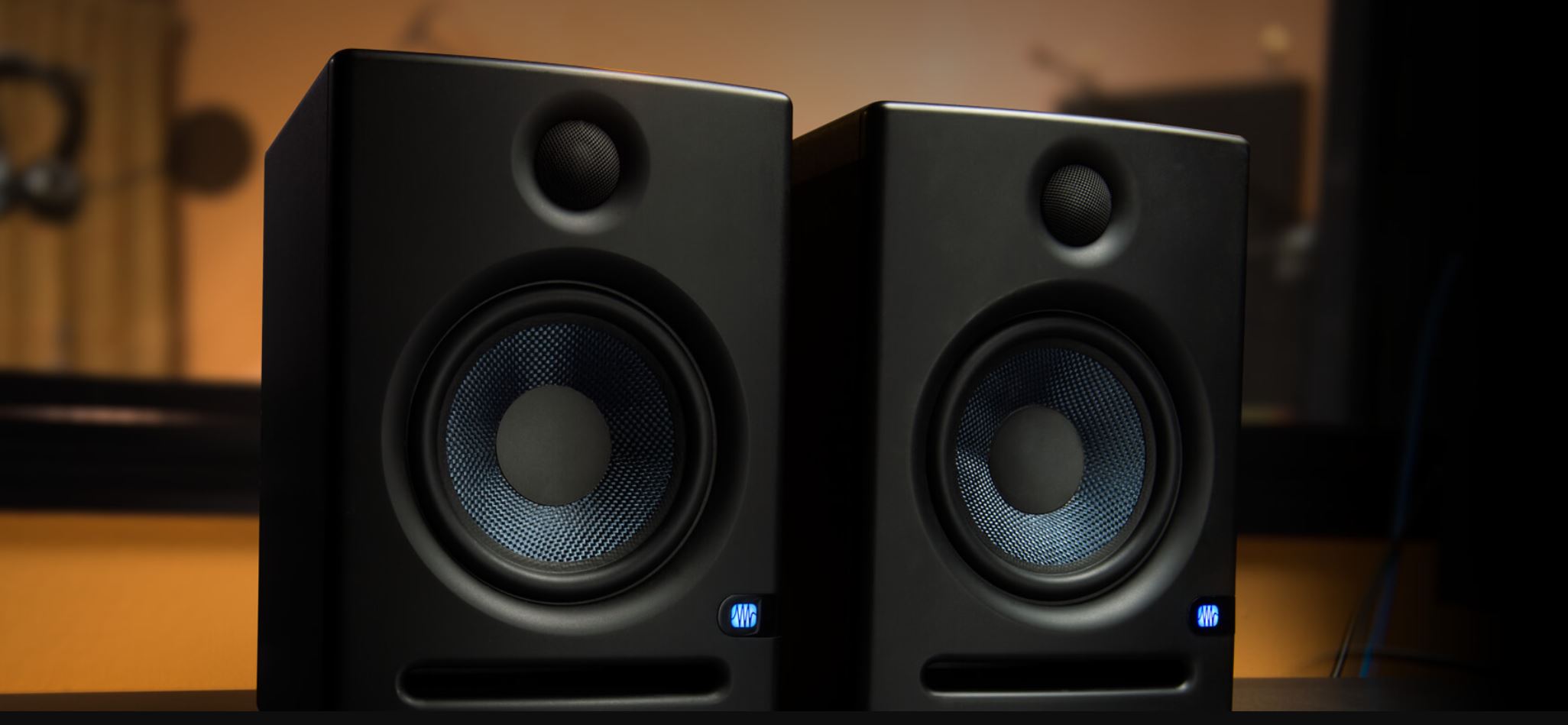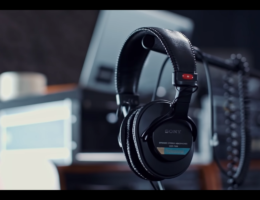If you’re new to the world of music production, you’re going to run into a few terms that are unfamiliar. One that is frequently misunderstood is the term “studio monitors.” Unlike the world of computing, where the word “monitor” usually refers to a visual screen, studio monitors in music are actually a type of loudspeaker, and they serve a specific purpose. But what are studio monitors? What makes them different from other speakers?
What Are Studio Monitors? A Quick Introduction
Pictured: KRK Rokit 8, 6 and 5
Studio Monitors
Studio monitors are designed to have an accurate, flat response. This means that they are built to present the audio without any coloring or alteration. If there are flaws in the recording, these will be more audible on a studio monitor than on other types of speakers. Studio monitors are primarily used by music professionals in situations where a “purer representation” of the track is preferable.
For example, if the low-end is lacking, it could be overlooked (or even encouraged) on a speaker system that boosts the base. When you have a pair of studio monitors, you know you’re hearing a song’s true sound.
Consumer Speakers
Other loudspeakers (like home stereo speakers) have been crafted with the average consumer in mind and not the music producer. As a result, these speakers often accentuate high frequencies or push low-frequency sounds (or both). When these speakers highlight the high and low end of the frequency range, the middle sounds get toned down by comparison.
The result is that many of the music’s flaws and inconsistencies are harder to hear. That’s better for the average consumer, but worse for the mixer.
4 Reasons You Need a Pair of Studio Monitors
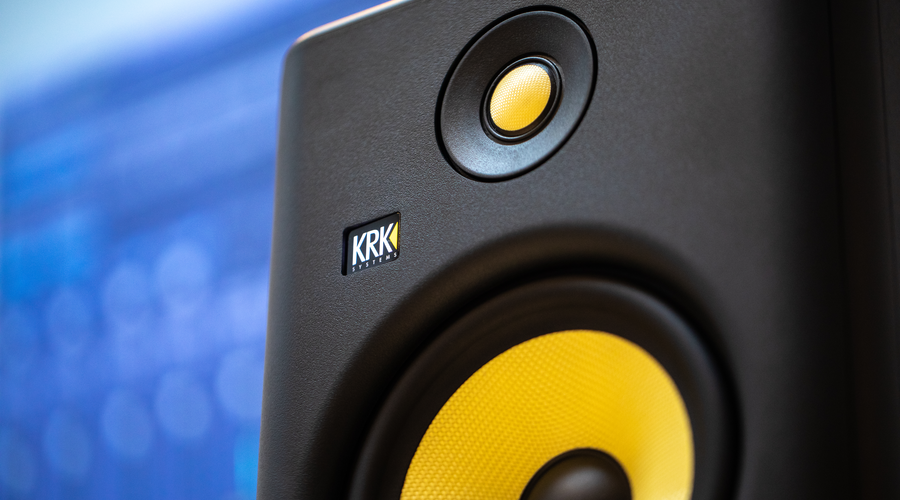 Pictured: KRK Rokit 5 G4
Pictured: KRK Rokit 5 G4
So when do studio monitors make a difference? If consumer speakers tend to make the flaws harder to hear, then why would anyone want studio monitors instead?
As a producer, artist, engineer, or creator in general, it’s useful and necessary to hear these flaws.
#1 – Studio Monitors Deliver More Accurate Sound
Pictured: Presonus E4.5-4.5″ 2-Way Studio Monitors
Studio monitors will generate the most accurate reproduction of the sound on the track. Of course, there’s no such thing as a “perfect” representation, as every loudspeaker will color the end product in some way, to a very small degree. The key with studio monitors is that they are consistent in the way they color the music. They don’t accentuate the top end or low end and blur the middle.
When you hear a song on studio monitors, you’re getting the most faithful possible rendition of that song. You hear it as the artist created it, without the speakers doing something to make it sound more commercially appealing.
Check Presonus Studio Monitor Prices
#2 – They’re Better for Mixing and Mastering
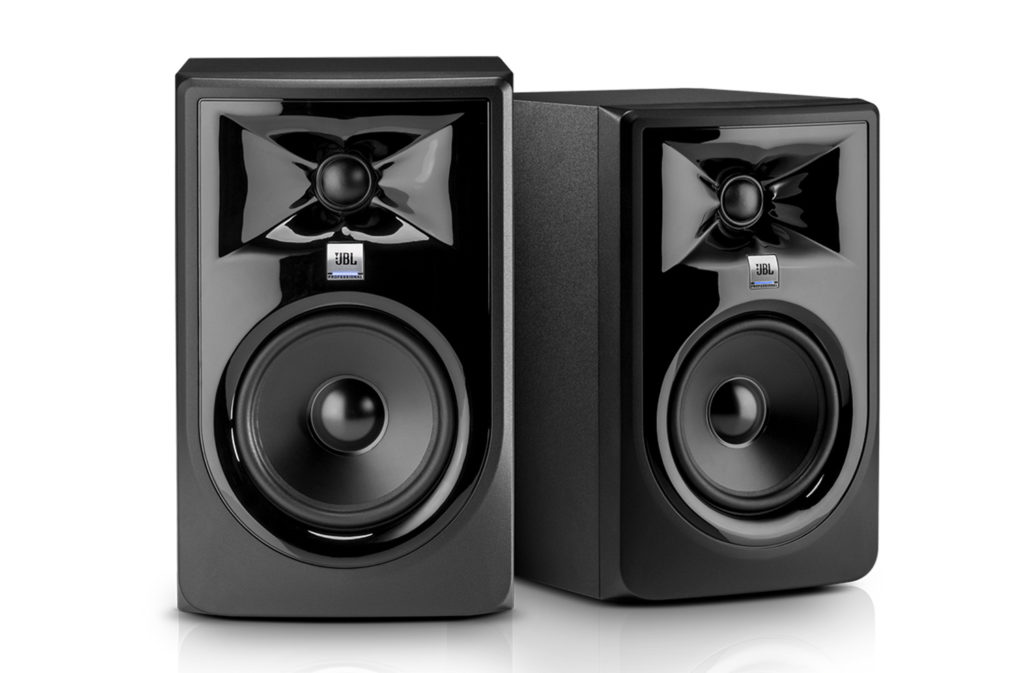
Pictured: A Pair of JBL Professional 305P MKII 5-inch 2-way Studio Monitors
Because the studio monitors’ audio is more faithful, this has huge advantages when you’re sound designing, mixing and mastering, or creating in general. In this capacity, these monitors are sometimes called reference monitors, because they provide a better starting point when examining how a track is going to sound.
Home stereo speakers sometimes make certain songs sound crisper. This is easier for many people to listen to, but it’s harder for editors to mix and master. The very fact that the music has been improved for a wider commercial appeal means that the original product has been altered.
Whether you’re a recording artist, a sound engineer, or a producer, you want to be able to hear the real deal when you listen to a track. Music producers aren’t always just listening to a song for pleasure; sometimes, they are listening with intent. They need to analyze what’s working with a song and what isn’t.
When you’re sitting in your home studio, trying to create the best possible mix, you want to know that your monitor speakers are giving you the most accurate sound possible. If the original has been altered on a set of hi-fi speakers, you may only be hearing what sounds good on that particular speaker system. If you make your mixing decisions based on that, then you might be in for a surprise when the track gets played on a different system, and the mix is completely thrown off.
Studio monitors attempt to achieve what’s known as “flat frequency response.” They strive to be consistent across the entire frequency range. This is what allows for critical listening. It lets you hear the right balance between the bass and the treble. It lets you hear all the imperfections, so you can create the best possible end product.
Check JBL Studio Monitor Prices
#3 – Studio Monitors Are More Responsive
Pictured: A Pair of Focal Shape 40 Studio Monitors
In music, the two main elements are sound and time.
You can probably list a lot more specific pieces, but I think everything fundamentally comes back to one of those qualities in some way or another.
So here’s another aspect to critical listening that is often forgotten, but is crucial for creating vibrant, dynamic tracks: the timing, which is summed up in your sound system’s transient response.
Creating perfect sound quality isn’t just about producing all the frequencies in a balanced way. Your speakers also need time to produce that sound. The more agile they are, the more faithfully they will represent that sound, and the more accurate your monitors will be at keeping the sounds sharp and clear.
Speaker systems and studio monitors are physical objects that translate electrical signals into sounds. In order to do that, they have moving parts that vibrate at extremely high rates. That’s how they work to generate sound waves in just the right way. If these parts are lower-quality, they will give less clarity about where one sound stops and another starts.
This quality is the speaker or monitor’s transient response. Studio monitors almost always have better transient response qualities than commercial speakers.
Another advantage of having a system with a quality transient response is that the increase in clarity means you can actually listen at a lower volume. If you’re in a home studio or sharing space with anyone else while you’re mixing and mastering, this quality can make their life (and yours) a little easier.
Check Focal Shape Studio Monitor Prices
#4 – They Are Surprisingly Affordable

Pictured: A pair of Mackie CR3s
Historically, studio monitors have usually been more expensive than regular speakers. Because they were marketed to a smaller crowd, they were often financially out of reach for a beginning music producer who was still working away in a home studio.
Fortunately, we live in an age where studio monitors are more affordable than ever. The T-Series from Adam Audio is just one example where a manufacturer has attempted to bridge the gap, and make their studio monitors more reasonably priced.
There are many other models in reach, including:
- The Presonus Eris line
- Mackie CR3
- JBL Professional 305p MkII
- Dynaudio Pro LYD-7
- Yamaha Hs5
- The KRK Rokit series (my personal favorite)
There’s obviously a price range in there, and some are cheaper than others. But even at the low end, you can still come away with something that will provide good sound quality and will help you create better music.
Active Studio Monitors vs. Passive Speakers
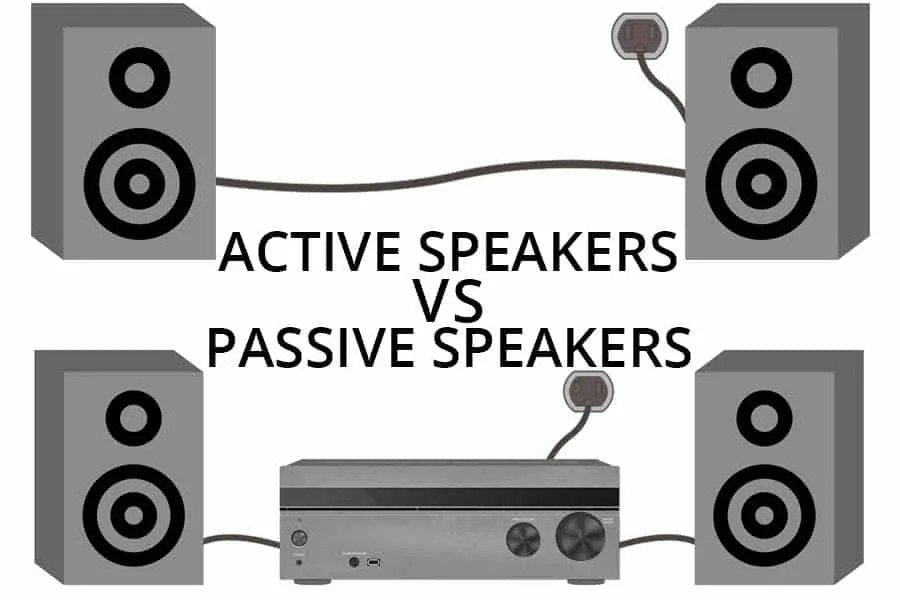
What is the difference between stereo speakers and studio monitors? Why do they work so differently?
Active or Passive Speakers
One of the main technical differences is that most studio monitors are usually “active monitors.” They contain their own power amplifier (or multiple amplifiers) that have been built into (and specifically for) the unit. This means, you don’t need to worry about getting an amplifier—the monitors have everything they need already to produce sound. Simply turn up the volume on your audio interface, and you’re good to go.
(For the record, there are some examples of “passive monitors” where this is not the case, but they are less common. For the most part, studio monitors fall into the “active” category.)
So what’s the advantage of using active monitors?
Active: A More Balanced Sound
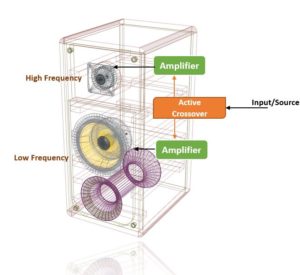
The amplifiers in active monitors can balance the power to the subwoofer as well as the tweeter and mid-range all at the same time. When you have a power amplifier for these various sound-producing pieces, you are less likely to experience an imbalance in the power going to each component… which leads to an unbalanced sound output.
The woofer is especially important here. Without a good amplifier, the woofer can sometimes siphon power from the rest of the unit, particularly in moments where the bass gets particularly loud.
Passive: Requires External Equipment
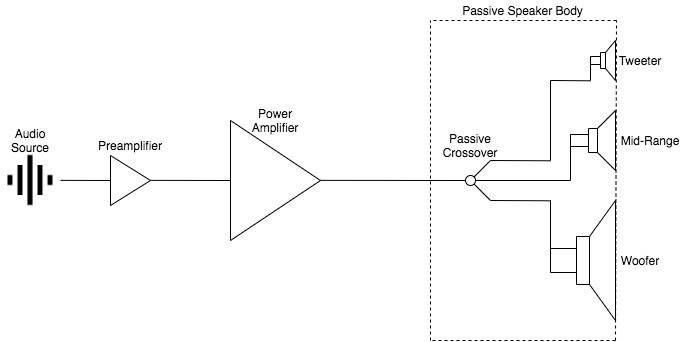
Home stereo speaker systems are typically passive. They rely on external power amplifiers. The downside of this, aside from convenience, is that if the speakers don’t come with an amplifier, you need to make sure you get the right amplifier.
If you don’t have the right amplifier for your speakers, you risk damaging the speakers. They might also not be performing at their best.
The advantage of active speakers and studio monitors, is that they’re operating with amplifiers specifically built for them.
Whether you’re in the recording studio or mixing, you don’t want to be worried about your sound output getting thrown out of balance because of inconsistencies. Using a monitor with a built-in amplifier means you can get them set up much more easily in a studio environment, without having to hunt down extra equipment in the process.
Studio Monitors vs. Powered Speakers
While the concept is the same, powered speakers are home audio systems that contain their own power amplifier. Like studio monitors, they can solve some of the challenges of power balancing. But it’s important to remember that these consumer-grade hi-fi speakers are designed for mass appeal. They often will still accentuate the edges of the sound frequency spectrum, and lose the detail in the middle.
This is just fine if you’re using them more for listening. If you’re trying to fill your home with a loud and energizing sound, then powered speakers can actually be a good choice. For casual listening, home theater sound systems, and parties, a set of powered speakers can be just the right thing.
But if you’re in your home studio and you’re in the middle of a mixing and mastering session, studio monitors will be the better choice.
Studio Monitors vs. Headphones
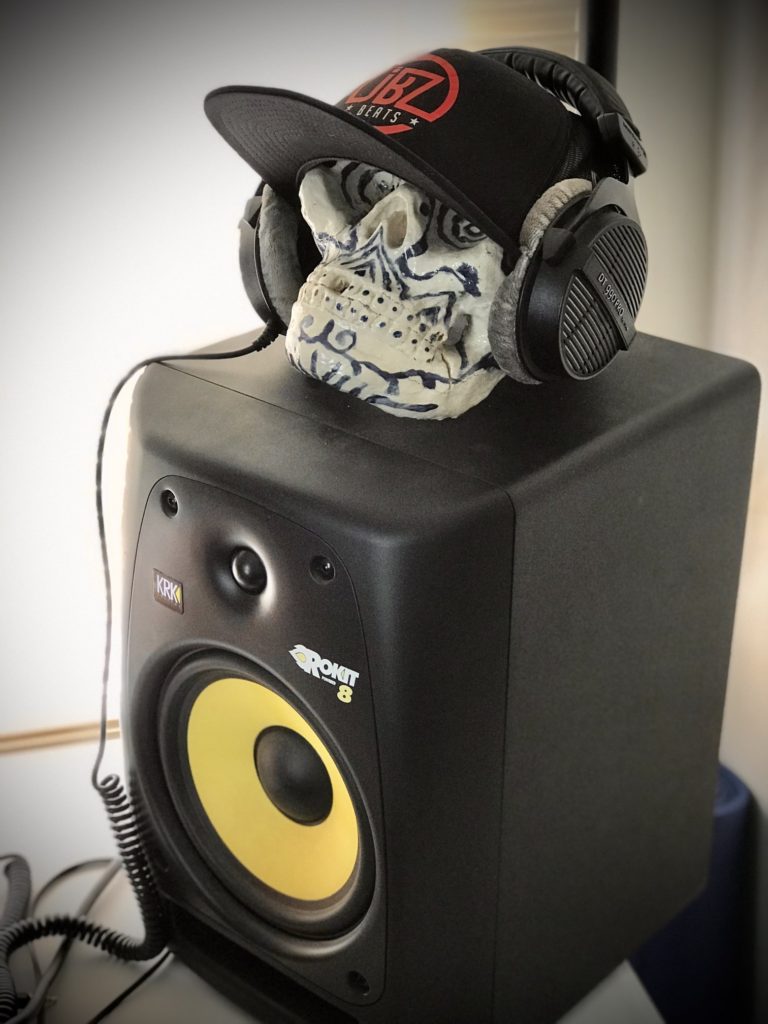
What about headphones? Can you use headphones for mixing and mastering instead?
Both headphones and studio monitors are great tools for mixing and mastering. It’s important to note that consumer-grade headphones can also be accentuating certain frequencies. So if you’re using headphones for mixing and mastering, they should be reference headphones, specifically designed to be “flat.”
But—be careful only using headphones for mixing and mastering. Headphones exaggerate the stereo field. While they’re great for catching sounds you might have missed, mainly because they sit so close to your ears, it’s important to also use studio monitors.
Reference Headphones

Pictured: Beyerdynamic DT 990 PRO
There are a few specific situations where reference headphones can be really helpful. Let’s say you are just getting started, and you don’t have a lot of choice in terms of where you put your home studio. Maybe it’s in a basement, because that’s all the space you have available. Maybe it’s somewhere where the room acoustics aren’t that great, or you’re limited in how you can position your studio monitors in the room.
In this case, you might benefit from the “second opinion” that you can get from reference headphones. But in general, you ultimately want to wind up with a setup where you can rely on studio monitors that are ideally positioned, as this will give you the best detail.
In Conclusion
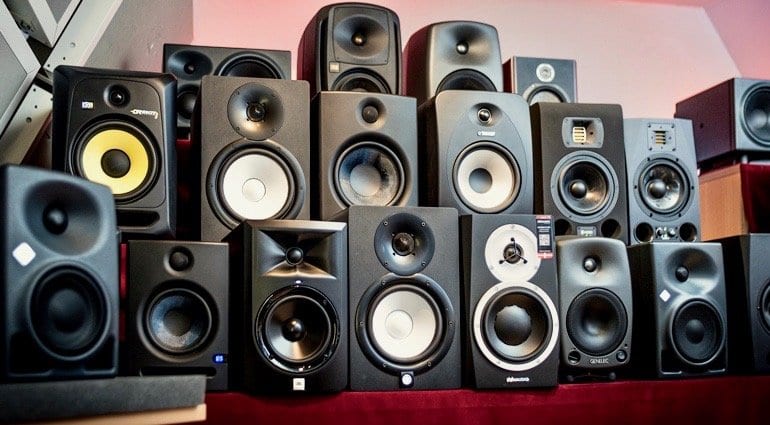
If you take the time to find a good pair of studio monitors, they can help make every mix you do that much better. Just like a great instrument will help you play better, great headphones and studio monitors can help you mix better.
On top of that, and this may be the most important part, studio monitors will make you better. They’ll help you develop your ear, your sense for detail, and your ability to listen with a purpose. When you are mixing, and know you’re hearing the “real deal” when you listen to your track, your sense for what sounds right will naturally improve.
That may be the single best reason to get studio monitors. No professional studio, or professional musician, should be without them.

